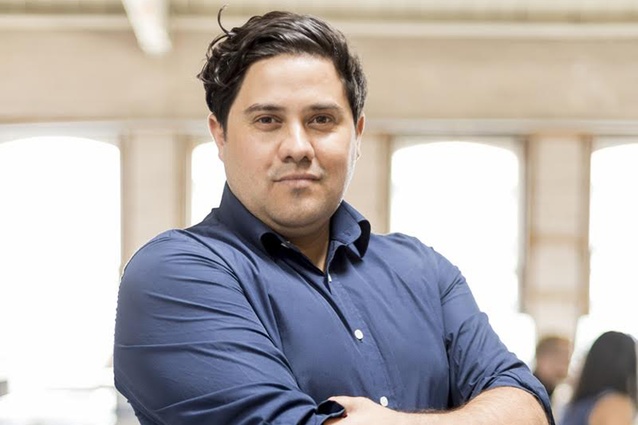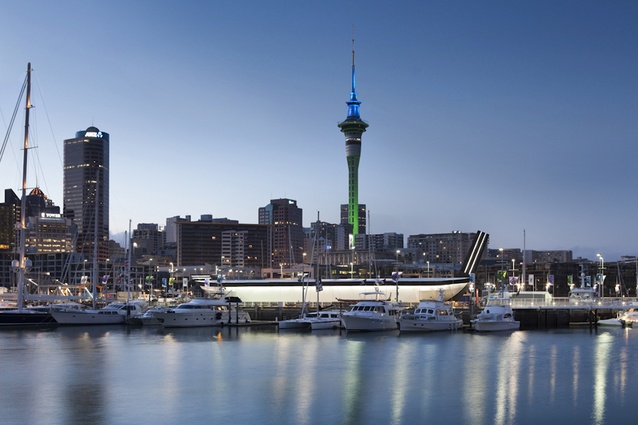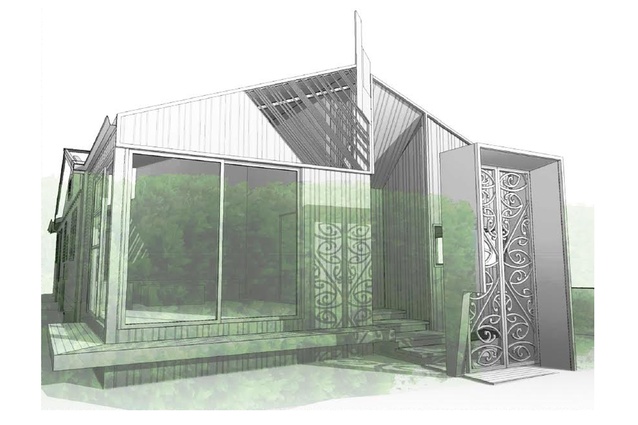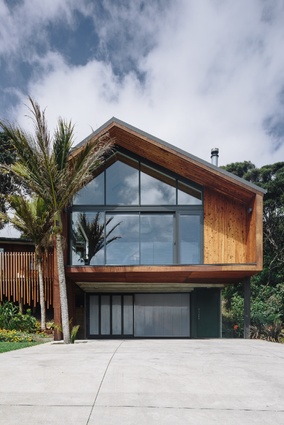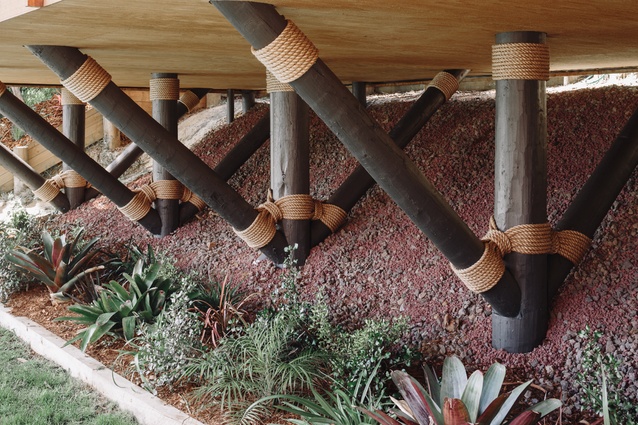Architect profile: Nicholas Dalton
The Muriwai House by TOA Architects' Nicholas Dalton features in the December 2015 issue of Urbis. Here Dalton talks about his career and influences.
Urbis: You came into architecture at a very young age, building your first house at just 17. Did you grow up around architecture and building?
Nicholas Dalton: Yes, my father worked as a ‘drafty’ for a RIBA firm called Hocking & Verral in the 60’s & 70’s in Rotorua. They completed most of the Modernist buildings down that way and had clients like the Ministry of Education and NZ dairy board. From the earliest age, I remember going to site and hanging out in the office. Dad would bring home the architectural models and I would have a field day with them, ripping the roofs off. In one of the family photo albums, mum has kept a plan I did pre–five years old that was an alteration of our family home.
Urbis: What were your early experiences of the built environment like? Do you think these experiences inspired the work you do today?
NB: A number of things in my early years shaped my architectural values. I grew up in an historic farming and milling village called Mamaku, established in 1880. Mum’s family moved there in the 1950’s. The house I grew up in was completed just after my birth in 1979; dad designed it. The plan and section were super efficient, a 10m x 10m footprint with three split-levels. The volume created was spatially epic and drives a lot of my architectural thought processes today. Most projects we have, we aim to create more volume by adding double height spaces and no single layers. This strategy also allows in the maximum natural light into a space.
I have a large extended whanau and we all gravitated around this house and Maketu, our local beach. So the beach, the farming vernacular, and my first childhood home are where most of my architectural vocabulary comes from. But, the building that is most sacred to me is my family church, St Faiths. It is situated in a village called Ohinemutu on the lake’s edge in Rotorua. It has a Tudor-style exterior and a stunning fully carved and tukutuku panel interior.
Urbis: A lot of TOA designs have a Maori/Pacific influence. Does this carry through to the way people use the buildings or is it mostly in an aesthetic sense?
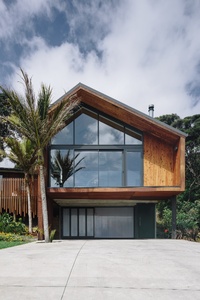
NB: Our ideas are developed in a multitude of ways – aesthetically, diagrammatically, spatially and conceptually. The Leitch house in Muriwai [featured in Urbis issue 89 – December 2015] explored a number of Maori and pacific concepts. First and foremost the house is located on Motutara road, ‘motu’ is Maori for ‘to sever’, ‘tara’ meaning ‘peak’, so in diagram that concept is repeated in the plan of the house which has two separate wings, separated by a figurative line. The bedroom wing, which is named ‘Ngahere’ or tree house, explores the notion of ‘kōhanga’ which translates to ‘nest’ place. Aotearoa New Zealand European heritage is acknowledged; the front end or more public pavilion is named ‘Zeeland’ in homage to Abel Tasman’s journey here in in 1642. In other projects we have and are exploring the re-contextualisation of ancient Maori artefacts and archetypes. I affiliate with two tribes, Tuhoe and Te Arawa. I am only now just connecting with my Tuhoe roots through limited research and am impressed with the segue back into architecture as they developed the first Living Building Challenge in the country.
A direct example of the influences from these affiliations is the house designed by senior TOA Associate, Jeremy Chapman, in Mahurangi, includes an entrance canopy derived from a korere, an ancient Maori feeding funnel.
Urbis: Do you use aspects of these cultures in the day to day running of your office?
NB: ‘Whanau mahi’ or office family is the central idea that is fostered in our practice. We have an incredible and diverse team from many different backgrounds and we encourage a platform of mutual respect here at TOA. We propose that we are the ‘Kaitiaki’ or guardians of our client’s projects and communities, the ‘Whenua’ or land that is to receive them, and as I say, most importantly, we are the Kaitiaki of each other.
Urbis: What are some great examples of Maori and Pacific influenced buildings you have seen?
NB: Wharenui meeting houses continually blow me away. The construction detail involved, the exquisite carvings, the fact that no two are alike, the notion of the building itself being a portal between the physical and metaphysical realms is something that continues to inspire me.
Urbis: What other fresh buildings are inspiring your work? Is there an architect or designer whose work you find most exciting?
NB: If I had to name one, it would be Chris Tate. His purity and conceptual bravery is next level. In particular his black Fin home on Waiheke. I’m blessed to be able to stay there, and it is not only a stunning object in itself, I feel reinvigorated every time I stay there.
Urbis: Where do you start when designing a new building? What is your process?
NB: Context. We start with the street name, the history of the area, search through the layers until something clicks. We ask ourselves, what are we doing here? Does this need a shake up and why? An example is the childcare centres that we have been involved with (Tiny Tuis in Mt Wellington and Little Wonders in Mt Eden). In Aotearoa, too often the childcare centres are a converted house or a precast box. If these buildings are what our kids are turning up to each day, they need to be uplifting, fun and exciting.
Urbis: You use a lot of timber in your designs – in fact, they are mostly timber and glass, with accents of colour. What attracts you to this material?
NB: I think it all comes back to my childhood. I grew up in a farming village as well as the beach. Simple buildings, simple materials, basic planning, and the fun and delight that was had within these simple structures was great. I like the idea of a subdued palate of materials like timber, glass, concrete with a pop of colour as an element of surprise.
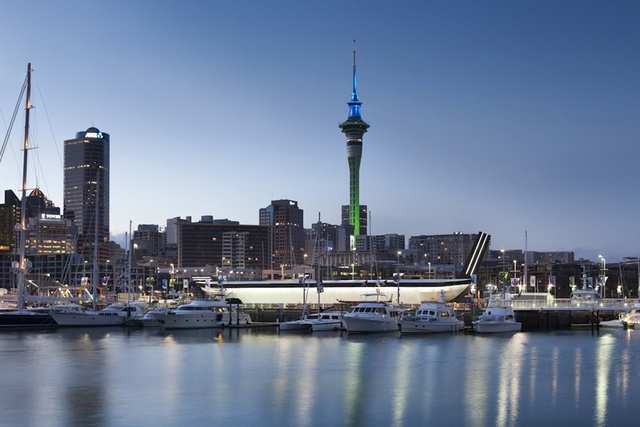
Urbis: The Waka Maori at the Rugby World Cup must have been a dream commission. Was it intimidating to have the opportunity to create such a prominent statement piece?
NB: This project was huge. The world was invited here and we had to show them a point of difference. Waka Maori was a pivotal project, one that was and continues to be close to my heart. It was voted the number one visitor experience (aside from the rugby of course) by the visitors in a survey released by a Melbourne newspaper. One of my good friends, who is a barrister in Auckland, said to me when we were having lunch in the Waka, “I’ve never been more proud to be Maori.” Forget the rest of the world; that was the best accolade.
Urbis: What are you working on now?
NB: We have a number of exciting projects. One of my favourites is an alteration is Point Chevalier. The Concept is Pataka, or Maori storehouse. We are also exploring the Waharoa or Gateway - watch this space, its pretty fresh…
Urbis: What would your dream project be?
NB: We currently work in most sectors. I made a pledge that it doesn’t matter how big we get, we will always do alterations and houses, because there is something very special about the intimate scale which makes them exquisite to work on. My number one dream is to create our own version of the Tate Modern. Again, watch this space…

